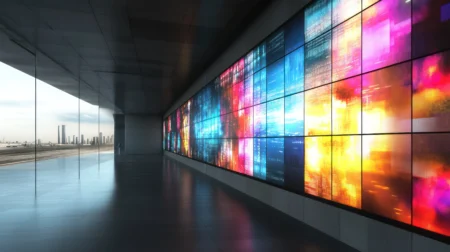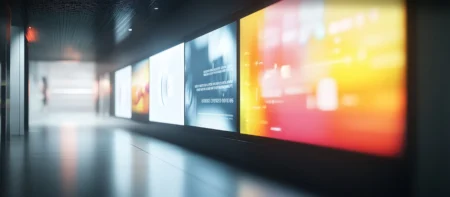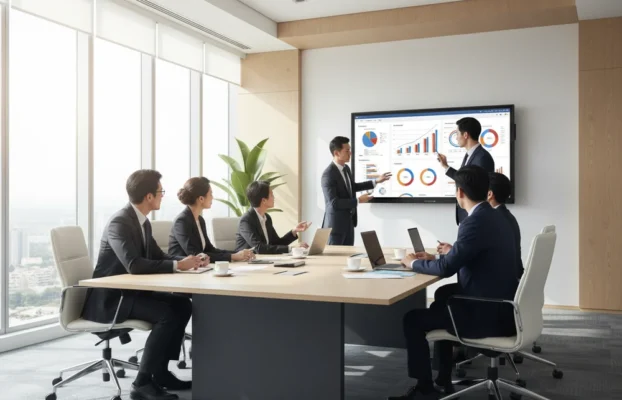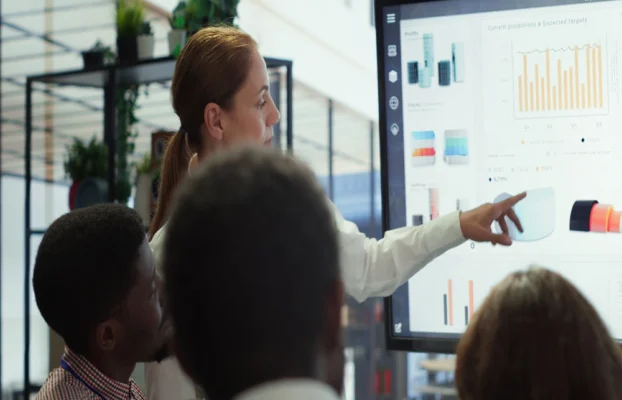In the fast-paced digital age, visibility and engagement are key factors that define a successful business. Whether you’re operating a retail outlet, managing a corporate office, or organizing public events, effective communication with your audience is non-negotiable. One of the most powerful tools businesses use today is the LED display—a bright, dynamic, and cost-effective medium that not only grabs attention but also enhances the customer experience.
What is an LED Display?
An LED display (Light Emitting Diode display) is a flat-panel screen that uses an array of light-emitting diodes to produce images, videos, or text. These displays are widely used for digital signage, advertising boards, public information displays, and even indoor presentation systems. Thanks to their bright output and energy efficiency, LED screens outperform traditional display technologies like LCDs or projectors in many applications.
LED screens come in various sizes, pixel pitches, and configurations—ranging from compact indoor screens to massive outdoor billboards. Today, they are used across malls, highways, stadiums, control rooms, conference halls, and even school campuses.
Key Benefits of LED Displays
1. Superior Visibility
LED screens are built to deliver high brightness and contrast, which makes them ideal for environments with varying lighting conditions. Whether indoors under fluorescent lights or outdoors under direct sunlight, LED displays provide excellent visibility from a distance.
2. Dynamic & Flexible Content
LED screens allow you to present multimedia content like videos, slideshows, real-time updates, animations, and more. With a digital signage system, content can be updated remotely and instantly, allowing businesses to stay relevant and responsive to campaigns, events, or announcements.
3. Energy Efficiency & Longevity
LED technology is energy-efficient and long-lasting. Compared to LCD or plasma screens, LEDs consume less power and generate less heat, making them a sustainable solution. Most commercial-grade LED displays can operate for over 50,000 hours, offering excellent ROI over time.
4. Customizable Size & Resolution
From small corner displays to giant video walls, LED screens can be customized according to your space, design, and pixel density needs. Pixel pitch options (e.g., P1.5, P2.5, P4, P6, etc.) determine the display clarity and are chosen based on viewing distance and location (indoor or outdoor).
5. Real-Time Communication
LED displays are excellent for sharing real-time information such as promotions, weather updates, news tickers, or emergency announcements. This is especially useful in public areas, transport terminals, or educational institutions.
Popular Applications of LED Displays
– Retail & Shopping Malls
Capture shopper attention with vibrant product ads, promotions, or wayfinding assistance. LED displays increase foot traffic and influence purchase decisions at the point of sale.
– Corporate & Conference Use
In boardrooms and event halls, high-resolution LED screens offer seamless visual communication for presentations, video conferencing, or corporate branding.
– Restaurants & Cafés
Digital menu boards and promotional signage are popular LED applications in F&B outlets. These displays are not only eye-catching but easy to manage and update.
– Public Transport & Government Facilities
LED displays are used in airports, train stations, and government offices to show schedules, queue systems, alerts, or directional signage.
– Education Sector
Schools and universities utilize LED displays for announcements, digital noticeboards, and smart classrooms to make learning more engaging and interactive.
Indoor vs Outdoor LED Displays
-
Indoor LED Displays
Indoor units have finer pixel pitches (e.g., P1.25, P1.5) for high clarity at close viewing distances. They are used in lobbies, auditoriums, and meeting rooms where lighting is controlled. -
Outdoor LED Displays
Designed to withstand weather and deliver high brightness, outdoor displays are typically larger and have higher pixel pitches (e.g., P4, P6). These are used for billboards, stadiums, and public signage.

Choosing the Right LED Display
When selecting an LED screen for your business, consider these factors:
-
Pixel pitch – determines sharpness and suitable viewing distance.
-
Screen size & resolution – based on available space and content type.
-
Installation type – wall-mounted, freestanding, or pole-mounted.
-
Control system – user-friendly CMS for content scheduling.
-
After-sales support – warranty, training, and technical support.
Why Arvia Solutions is the Preferred Choice
At Arvia, we deliver cutting-edge LED screen solutions tailored to your business needs. Our products include:
-
Indoor & outdoor LED screens
-
Fine pitch LED walls
-
Transparent and curved LED displays
-
Digital signage CMS systems
-
Installation, training, and local support
Our displays are SIRIM-certified, and we’ve worked with leading names like KKM, Petronas, and TV3 to transform their communication strategies. With our expertise and end-to-end service, you can trust that your LED investment will pay off in impact, reliability, and value.
Conclusion: LED Display is More Than a Screen—It’s a Strategy
Investing in an LED display is not just about upgrading your visuals—it’s about transforming how you connect with people. From vibrant advertising to real-time communication, LED screens give your business the attention it deserves. With a trusted partner like Arvia, you’re not just buying a product—you’re gaining a full visual solution backed by experience and innovation.







